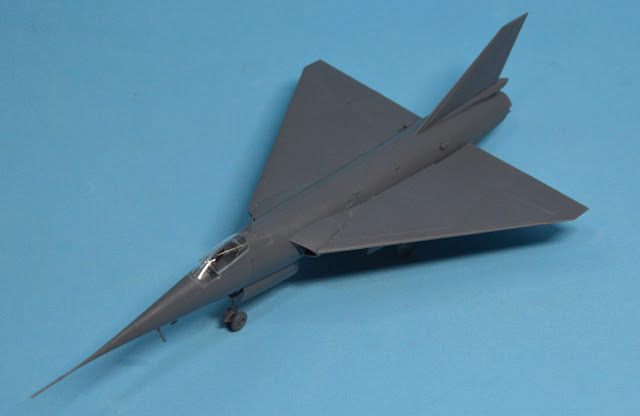Below; nice view of the legendary Fairey Delta 2 WG 774 preparing for a demonstration flight at the Farnborough Air Show c1954. The first FD.2 WG 774 made its first flight on 6 October 1954 with Peter Twiss at the controls. Flight testing continued until 17 November 1954 when during Twiss' 14th flight the engine failed and Twiss - with superb calm headedness - had to land a powerless machine, there being only enough hydraulic pressure to lower the nosewheel.. On 15 February 1956 the second FD 2 WG 777 made its first flight in the hands of Peter Twiss. Althugh both FD 2s carried service roundels neither saw service with the RAF. From the outset Twiss had felt that the type was capable of exceeding 1,000 mph and started calling for an attempt on the world air speed record then held by a F-100 Super Sabre at 822 mph..
Outpacing the Sun' Fairey FD.2 Booklet 1956
A large 32 page booklet produced by Fairey in co-operation with the 'Aeroplane' magazine telling the full story of the Fairey FD.2 attaining the absolute World Speed Record of 1,132 mph in March 1956. The story of the man who flew it, the men who built and designed it and how a speed of 20 miles a minute was measured at over 7 miles above the earth. Sample pages shown.
Fairey Delta 2 WG 774 remains one of the most important aircraft in British aviation history, being the original delta wing jet, and the first aircraft to exceed 1,000 mph. ( Aircraft set new record speed of 1,132 mph on 10 March 1956 ) The British Aircraft Corporation BAC Type 221 was a reconfiguration of the record breaking Fairey Delta 2 into a test bed to test the wing shape of Concorde. First flown as the Type 221 in May 1964, WG 774 spent a further nine years on test flying before being retired in June 1973.
















.jpg)
.jpg)
.jpg)





.jpg)
.jpg)